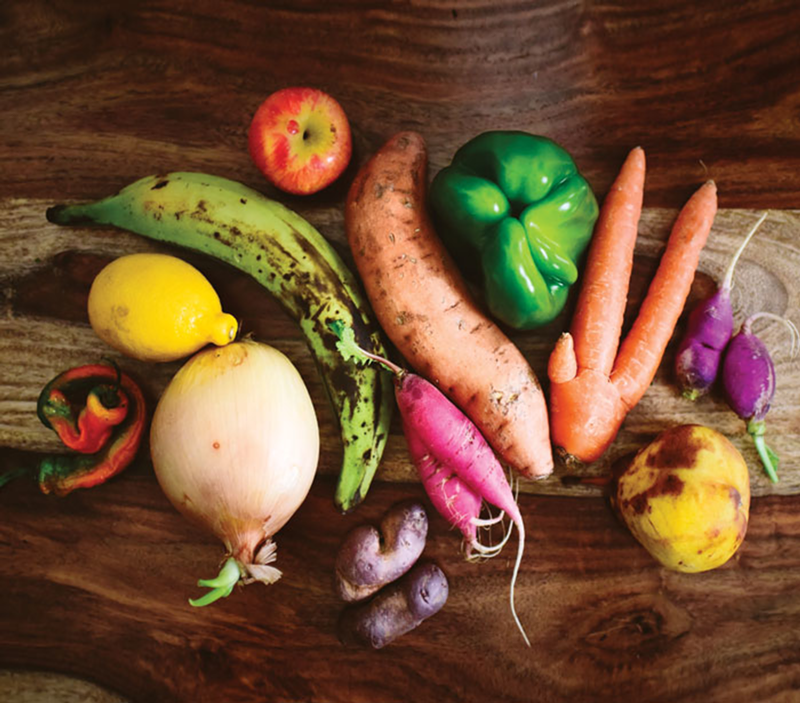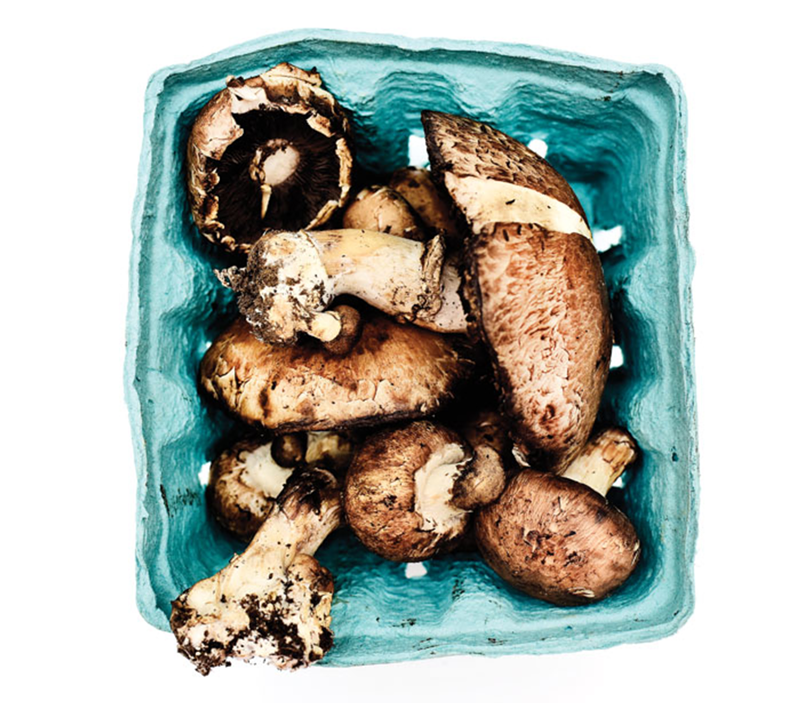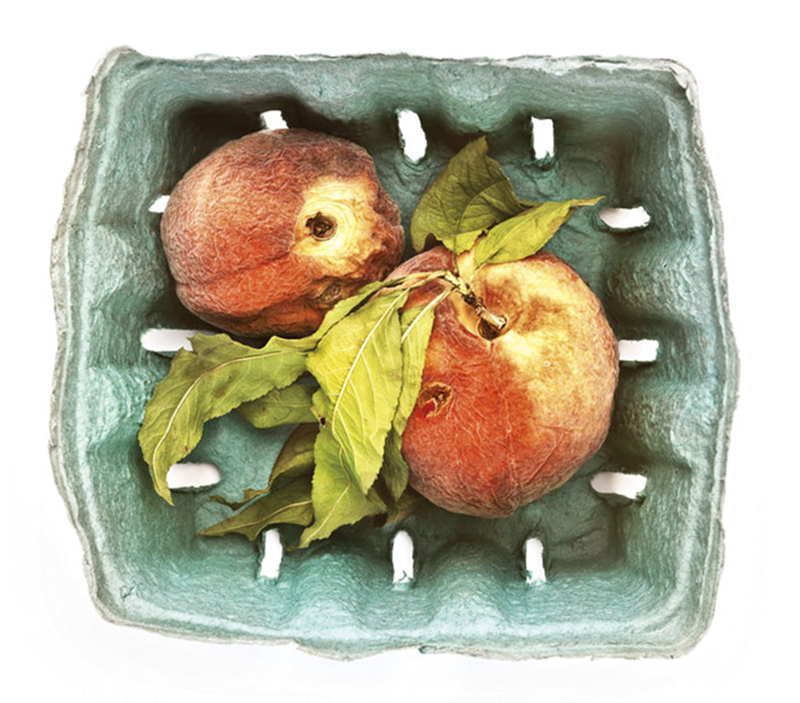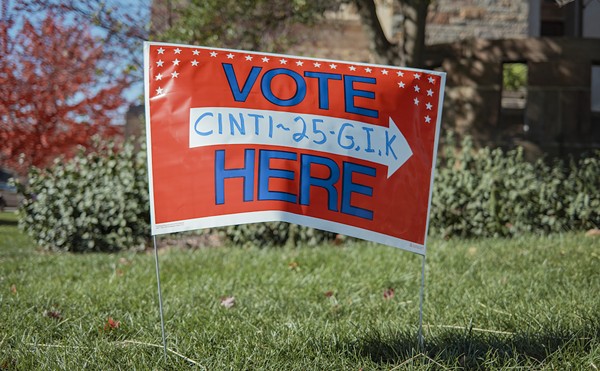Y
ou’ve seen them as you walk through the farmers market or the produce section of the supermarket: the hideous potato, the monstrous lemon, the mutilated carrot. Fruits and vegetables that are misshapen or bruised and — although perfectly fine, safe and tasty to cook with and eat — usually go unsold and are eventually thrown out.But a new movement that originally ripened in Europe is slowly reaching the U.S. in an effort to effect a sea change in the way we approach reducing food waste, a global problem that has reached devastating proportions. The culinary à la mode among sustainable chefs, farmers and foodies? Ugly food.
In 2014, the third-largest supermarket chain in France, Intermarché, introduced a radical campaign to change the way people buy and think about their produce. It marketed less-handsome fruits and vegetables as “inglorious,” selling them for 30-percent cheaper. Sleek ads depicting conjoined apples, obese eggplants and other “disfigured” produce drove sales and reduced waste once consumers figured out ugly vegetables taste ju
st the same as their more-attractive counterparts.
Although the “Ugly Food Movement” uses a playful approach, the magnitude of the issue is shocking. Forty percent of food in the United States goes uneaten, costing the country more than $160 billion annually, according to the Natural Resources Defense Council. How much would it cost to solve world hunger? Only $30 billion a year, according to the United Nations.
As chefs all over the world harness the sustainable, farm-to-table ethos so trendy right now in the culinary world, ethics is becoming a staple in the kitchen. And Midwestern chefs are using donations from grocers and farmers to form a symbiosis aimed at preventing food waste.Local chefs and restaurants on ugly food
Meg Galvin, an instructor at the Midwest Culinary Institute at Cincinnati State, supports the ugly-food movement but calls it a catch-22. “If enough consumers aren’t going to buy it, retailers won’t put it out,” she says.
Suzy DeYoung, head chef and owner of La Soupe in Newtown, makes soups and salads exclusively from produce that would otherwise go to waste. She says the concept started with a desire to help the underfed in the community. “I started with a simple thought: How many people could I feed if I only used food that most people considered ugly or not perfect?” she says.
The answer is, simply put, a lot. For every cup of soup sold, DeYoung donates one to someone in need. She gets her ingredients from local farms, but says donations from supermarkets like Kroger and Jungle Jim’s International Market play a large role as well. Crates of kale, tomatoes, squash and herbs that would normally end up in a landfill are given to her regularly and transformed into something beautiful — and tasty.
She says the irony is that the reason a brown spot might exist on a fruit or vegetable is because it’s organic and hasn’t been treated with chemicals. “You cut off the brown spot and use the rest,” she says. “In soups it really doesn’t make a difference (what the produce looked like).”
But where does one get ugly food? Some grocers offer sections of discounted produce — Galvin says her Kroger in Fort Mitchell does — but many chefs go straight to the farms. DeYoung calls her storefront a “safe house” for produce because of the donations of “seconds” and surplus food.Walk into Dirt in Findlay Market, a new farm collective nestled between Eli’s BBQ and Maverick Chocolate, and you’ll frequently see a freakshow of produce that’s just as delicious as its picture-perfect counterpart. Not that ugly food isn’t photogenic, too — scrolling through images on social media tagged with #uglyfood, you’ll find an abundance of beautiful twisted potatoes, knobby carrots and warped peppers.
Local chefs stress not only the importance of cooking with ugly food, but also how important it is to be educated about resourceful ways to use food most would toss. “Landfills should not be filled with perfectly edible food, especially when nearly half of our city’s kids are going to bed hungry,” DeYoung says.
For example, overripe peaches might not make it to your lunch bag, but they’d be great in a cobbler. The stems of parsley leaves can be used in smoothies or for soup stock. A watermelon rind can be pickled and made into a tart chutney. In this way, cooking with a conscience ends up being not only more economical and environmental, but also more liberating.
Local culinary wunderkind Ryan Santos, whose new restaurant Please will open next spring in Over-the-Rhine, gets “seconds” from farmers that he can use in purées or slushies. “It’s important to be creative and make time to use these ingredients,” Santos says. “Often they can be pickled, juiced or fermented and layered into a sauce or marinade later.”
But are there ways to be resourceful for those of us who aren’t as dexterous in the kitchen? Yes. Buy less food. DeYoung says that visiting the grocery store every two or three days instead of every seven helps control the amount you waste. She also composts leftovers that she can’t use in soups.
Galvin recommends what might seem, given the aforementioned statistics, like a truly radical idea: actually eat the food you buy. “If you eat everything that you buy, you really don’t have much to compost,” she says.
Big grocers and the myth of picture-perfect produce
When it comes to produce, like everything else in the world, salability governs what we deem perfect. In a social-media culture in which we take nearly as many pictures of our food as meals we actually eat, the pristine fruits and vegetables are the ones we’re usually more likely to buy. The onus of introducing ugly food and blemished-but-healthy produce into households often falls on local grocers.
Jungle Jim’s International Market appears to be the most forward-thinking local market when it comes to ugly food, with an entire section — the “Goonie” department — housing what it deems “marred, bruised, damaged or aesthetically inferior product” at a reduced price.
“It’s not at all weird for our shoppers to buy cheeses with mold on them when they’re in our Goonie department,” says Jared Bowers, the content coordinator at Jungle Jim’s. “They know to just cut off the mold because they’re already so familiar with the product, because they grew up with it and they know it’s still OK to eat.”
Bowers says the product isn’t harder to sell at all, but the contrary — he says it’s some of the easiest food to sell in the store. Whenever there’s a surplus, the company’s two stores donate to local charities and nonprofits (Bowers cited La Soupe as one, though it is actually a for-profit organization).
Kroger isn’t opposed to selling ugly food at a markdown, but doesn’t yet have a section at each location exclusively dedicated to it like Jungle Jim’s does.
Kroger is helping curb food waste and hunger in the community through other ways, though. Patty Leesemann, a Kroger representative, says the chain donated more than 54 million pounds of food in 2014, more than 1.7 million pounds of that from the Cincinnati/Dayton division. “Product that we can no longer sell but is still safe and nutritious to eat, we donate to local food banks,” Leesemann says.
“Oftentimes there are USDA standards that provide guidelines on anything that’s going to be considered U.S. 1 grade,” says Rob Saffron, Kroger’s Cincinnati/Dayton division produce merchandiser, who added that “these standards do allow for some off-color or off-quality product to be included.”
The fact that many see “off-color” or ugly foods as “off-quality” might be one reason it’s harder to market them to consumers; they equate ugly with unhealthy. But this isn’t the case, and the regulations that earn vegetables and fruits a “U.S. No. 1” grade — the USDA’s highest standard — range from the practical and the arguably unneeded to the borderline farcical.
According to the USDA guidelines, a No. 1 grade of beet is “fairly smooth” and “fairly well shaped,” where produce given a No. 2 grade is “not seriously misshapen.” A No. 1 grade-Brussels sprout’s diameter “shall be not less than one inch, and the length shall be not more than 2-3/4 inches.” Many fruits, like Winter Pears, must be “well formed” to get No. 1 status. And so forth. Higher-graded produce is reserved for pretty produce, and this is what grocers are intent on selling. Because of this, farmers use more pesticides to keep their produce aesthetically pleasing.
That supermarkets are determined to keep that higher grade in stores, and the USDA’s persistence in ranking misshapen and blemished produce as a lesser kind, raises an important question: Would consumers still be as ready to buy a “lower” grade of produce if there was no difference in flavor, and if it meant, possibly, less pesticides?
New frontiers for preventing food wasteEarlier this year, the University of Cincinnati’s business and engineering departments developed the first prototype for SolerCool, a refrigerator with solar panels that allows food to stay cool during transportation. The project was created for farmers in India, where 30 to 40 percent of crop is spoiled during transportation due to lack of proper refrigeration.
Organizations like Community Supported Agriculture (CSA) also provide opportunities to curtail unnecessary waste — consumers partner with local farmers to receive a box of surplus vegetables each week.
When considering the U.S.’ food problem, culinary community members say it’s important to hold everyone accountable. Farms, restaurants and households all contribute to the waste. “It’s a whole circle,” says Galvin of the Midwest Culinary Institute. “Everyone has to be on board.”
Ugly food has been called a “trend,” which implies it will eventually fade away or be replaced. Local chefs urge consumers to talk to their grocers and family members about being aware of how much food is being bought and used. “Lets face it, we all waste,” says DeYoung of La Soupe. “But making a conscience effort on every level, we can make a difference.”
So the next time you pass by a mangled potato or an ugly apple, whisper to it that everything’s going to be OK; it’s pretty on the inside. And then add it to your cart. ©









